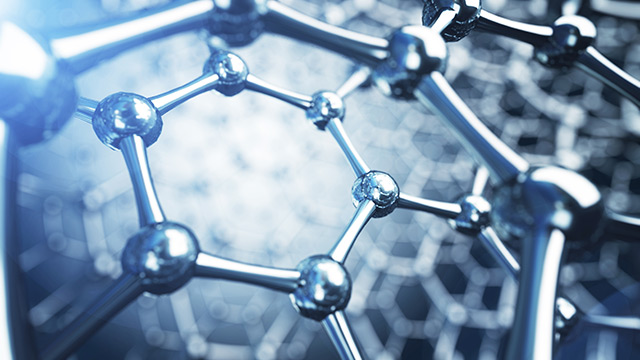
Graphene is a sheet of interconnected carbon atoms with the thickness of a single atom. So far, it is the strongest material ever made by humans, and we're still exploring the limits to its applications.
In comparison to that modern wonder, concrete has been used for thousands of years in one form or another. It has received a lot of incremental refinement, but the production process remains more or less the same.
Earlier attempts to improve concrete focused on altering one of the components of cement. For example, Lithuanian researchers created a cheaper ultra-high performance concrete by adding milled glass to the mix – and they did this by accident.
The University of Exeter (Exeter) research team looked for a way to deliberately incorporate the strength of graphene into concrete.
Graphene flakes in concrete boost its strength, flexibility, and water resistance
They came up with a nanoengineering technique for a graphene suspension. Tiny flakes of graphene, each one as thin as an atom, are set to float within water.
To create this graphene suspension, the researchers added cement, aggregate, and the other ingredients used in making conventional concrete. They proceeded to analyze the strength, flexibility, and water permeability of the modified concrete.
They reported that the composite concrete showed 146 percent more compressive strength, which is the ability of a material to support heavy loads before breaking apart. It also exhibited 79.5 percent greater flexural strength, meaning it can flex much further.
Finally, the composite concrete proved to be four times as resistant to water as conventional concrete. Water will have a much harder time penetrating the composite, which protects the metal support sheathed within the structure. (Related: Breakthrough construction material for earthquake protection will mean safer buildings and bridges.)
Structures made from the graphene-enhanced concrete will last much longer. These stronger, sturdier buildings will need less repair and enjoy longer periods between replacements, which translates into savings on material and labor costs.
Reducing cement needed for concrete production also lowers carbon dioxide emissions
If that was not enough, the researchers were able to reduce the amount of cement and other materials by half. These ingredients are what normally lend concrete its strength, but the graphene can make up for them.
These massive reductions are good news given the cement-making process produces a lot of carbon dioxide. Reducing the amount of cement needed for a construction or repair job benefits the environment by reducing CO2 emissions.
The Exeter researchers have calculated 1,082 pounds (491 kilograms) of carbon dioxide can be saved for every ton of cement.
They remarked that the process of making graphene-enhanced concrete is affordable. The method is reportedly easy to incorporate into existing mass production lines, and the product is compliant with British and European Union standards for construction materials.
"Finding greener ways to build is a crucial step forward in reducing carbon emissions around the world and so help protect our environment as much as possible," says Dimitar Dimov, an Exeter doctorate student who co-authored the study on composite concrete. He called the new material the first crucial step to making the construction industry a sustainable one in the future.
Dimov recently put up his team's findings in the science journal Advanced Functional Materials, under the title "Ultrahigh Performance Nanoengineered Graphene-Concrete Composites for Multifunctional Applications."
For more articles about scientific breakthroughs that benefit the construction industry, visit Scientific.news.
Sources include:
Please contact us for more information.























